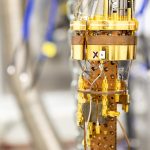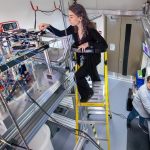MIT’s ‘refashion’ software lets you rebuild your clothes into new outfits
The fast pace of fashion often leaves behind a trail of waste. Trends change quickly, and clothes that once felt stylish can seem outdated...
Scientists create time crystal that could transform quantum computing forever
A crystal’s beauty comes from how perfectly its atoms line up in space.
In 2012, Nobel Prize–winning physicist Frank Wilczek wondered—what if something could form...
New open-source software revolutionizes 3D printing with multiple materials
A new open-source software tool is changing the way engineers design and print complex 3D objects.
Developed at the University of Colorado Boulder, the program—called...
New molecular qubits could help build the future quantum internet
Scientists at the University of Chicago and their collaborators have developed a new kind of molecular qubit that could connect directly with today’s fiber-optic...
What could burst the AI bubble
Some of the world's biggest tech firms have soared in value over the last year.
As AI evolves at pace, there are hopes that it...
How AI can help prevent cancer and heart disease
Deep inside the body, a silent and slow-growing problem can start.
In about 1 in 5 older adults, a small group of mutated blood cells...
Scientists build tiny fluid chip that thinks like a brain
Scientists from Monash University in Australia have developed a groundbreaking chip that uses liquid, not electricity, to process information—just like the human brain.
The invention...
AI and gene tools could treat heart disease much better
Heart disease is the number one cause of death in the world, despite big improvements in medical care.
One reason for this is that most...
AI could help hackers plant hidden flaws in computer chips
Artificial intelligence is transforming many industries in positive ways, but new research warns that the same technology could also be used for dangerous purposes.
A...
New tech lets cushions, clothes and backpacks talk back
Imagine squeezing a cushion to turn off your lights, or feeling your backpack gently press your shoulder to guide you on a walk.
Thanks to...










